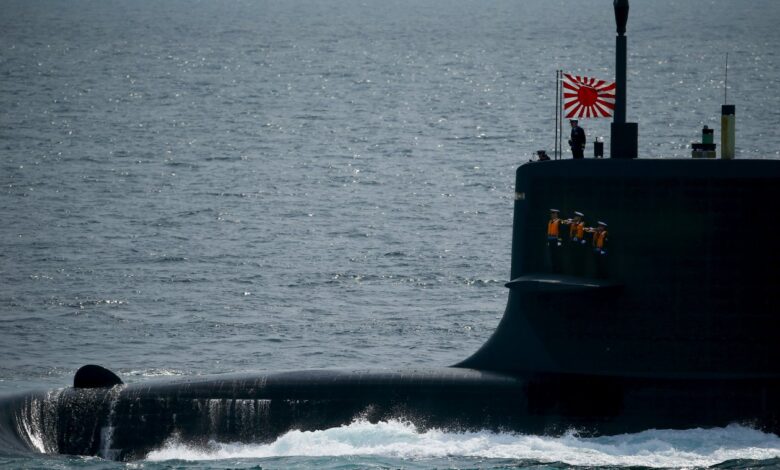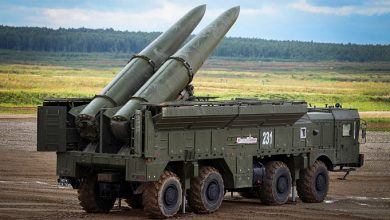Analysis: Japan’s new submarine fleet has China worried

In June 2019, submarine manufacturer Mitsubishi Heavy Industries hosted a presentation (subsequently shared on Twitter) revealing plans for Japan’s next-generation submarine, dubbed the 29SS or “New 3,000-[metric] ton Submarine.”
Documents reveal the 29SS will begin development in 2025–2028, and is targeted for entry into service in 2031. The lead ship is estimated to cost 76 billion yen ($710 million) and will likely serve primarily for testing and development purposes.
The Japanese Maritime Self Defense Force (JMSDF) is planning to increase its submarine fleet to twenty-two operational diesel and AIP-powered submarines, plus one testing and two training submarines. The increase is likely meant to counterbalance China’s burgeoning undersea fleet of around seventy submarines, including several nuclear-powered attack and ballistic missile submarines.
To enable this expansion, Japan’s 2019 defense budget includes funding to upgrade and increase the service life of seven older Oyashio-class diesel-electric submarines which entered service in the 1990s.
Meanwhile, Kawasaki Heavy Industries is currently completing a twelfth Soryu-class submarine weighing 2,900 metric tons surfaced, with three more likely to be built by KHI and MHI. Unlike earlier Soryu boats, the final flight has swapped out its air-independent propulsion system for long-lasting lithium-ion batteries (LIBs)—a larger-scale, ruggedized adaptation of the lightweight, high-power-density batteries used in smartphones and laptops.
You can see a provisional drawing of the 29SS design by submarine analyst H.I. Sutton here. Earlier Japanese articles have also cataloged several technologies expected to be integrated in the 3,000-ton submarine.
Streamlining
The 29SS appears to be a further evolution of the LIB-powered Soryu, retaining its same essential hull form and its X-shaped rudder, which improves maneuverability and resilience. However, the Soryu’s bow has been inclined and its tall sail (conning tower) squashed downwards and blended into the hull of the 29SS. Diving planes formerly located on the sail are moved to the front of the hull.
These modifications appear intended to improve aquadynamics, thus enhancing acoustic stealth and decreasing drag, which could result in increased speed and range. A “floating floor structure that can mitigate vibrations and shocks” may also make the 29SS quieter.
Pump-jet Propulsion
The 29SS’s shrouded propulsion system configuration suggests a heavier pump jet propulsor system instead of a conventional propeller. Pump-jets are unlikely to produce noisy cavitation, and allow quieter running at higher speeds. One source claims a “thirteen-blade” pump-jet would be 20 decibels (two orders of magnitude) quieter than the seven-bladed propeller on the Soryu.
However, pump-jets are usually only incorporated on much faster nuclear-powered submarines such as the U.S. Navy’s Virginia-class or Russia’s Borei-class SSBN. Diesel-electric submarines, however, can rarely afford to burn through battery with sustained high-speed cruising.
Thus, the incorporation of pump jets suggests the 29SS may be designed to cruise at higher speeds for longer than is typical of a diesel-engine submarine.
Advanced New Sonars
Japan has also been developing advanced conformal sonar systems. The 29SS’s bow sonar will reportedly be optimized for discretion, long-distance detection, and also function better in shallow coastal waters. This last is particularly a concern in the rocky shallows off the Korean peninsula, in which North Korea operates dozens of small submarines that could prove difficult to detect.
The 29SS’s side-array hydrophones will reportedly use a fiber optic sonar which “senses sound not by the pressure of sound waves but by the interference effect of light.” This sensor may also be effective for detecting electromagnetic emissions.
There will also be a towed sonar array for long-distance, omnidirectional tracking, a reverse-search sonar array, and a broadband transmission array.
Returns from multiple sonars will reportedly be integrated into a synthetic sensor picture on the submarine’s new combat system, which can perform target-motion analysis and suggest firing solutions.
New Torpedoes
So far, there are no indications as to the 29SS’s precise armament configuration, though it will undoubtedly include at least a half-dozen torpedo tubes.
However, in 2012, Japan began developing a “high-speed, long-distance, long-endurance” successor to its standard Type 89 torpedo called the G-RX 6. Supposedly the new, optionally wire-guided system will use a stealthy hydrogen/oxygen combustion turbine, and it sonar will better be able to discriminate between decoys and real targets and time the detonation of the warhead for optimal effect depending on target type. The torpedo will be designed




